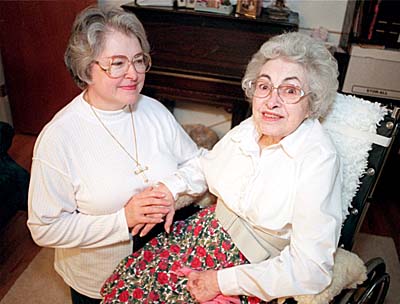|
|
Prices of
Drugs for Elderly Said to Far Outrun Inflation
By Milt
Freudenheim, The New York Times
August 16, 2005

For the third consecutive year, the average prices of
dozens of brand-name prescription drugs widely used by elderly Americans
have risen more than twice as fast as general inflation, according to a
survey to be released today by the advocacy group AARP.
The 12-month average increase for 195 drugs was 6.6 percent, or more than
double the 3.1 percent rise in the Consumer Price Index that tracks
general inflation.
Also in line with the trend in recent years, there was little inflation -
less than 1 percent - in the average price of generic drugs, AARP said.
Stephen W. Schondelmeyer, a University of Minnesota drug price specialist
who analyzed wholesale drug prices for the AARP survey, said the price
increases underscored the big burden the federal government will be taking
on in January, when Medicare benefits will be expanded to include
prescription drugs.
Consumer groups, including AARP, which represents older Americans, have
been trying to persuade Congress and the Bush administration to use
Medicare's vast purchasing power to bargain directly with drug makers on
prices. Under the 2003 law that set up the new drug benefit, Medicare is
currently barred from such negotiating, but must accept prices negotiated
by insurers, drugstore chains and pharmacy benefit managers - which
individually lack Medicare's clout.
Drug makers, Mr. Schondelmeyer said, "want to manage their prices,
and they might as well start from as high a point as they can."
Ken Johnson, a spokesman for the drug industry, criticized the AARP
numbers, saying they were based on wholesale prices and "do not
reflect the true amounts paid by seniors for their medicines." Mr.
Johnson, a senior vice president of the Pharmaceutical Research and
Manufacturers Association, said actual overall drug prices were not rising
as fast as general inflation, once rebates and discounts arranged by
insurers were taken into account.
That view is shared by the American Enterprise Institute, a conservative
research center in Washington. "With the new Medicare benefit, no
senior will have to pay the full retail price for prescription
drugs," Joseph Antos of the institute and Thomas F. Wildsmith of the
Hay Group, an organizational consulting firm, wrote in a recent institute
report.
But Dee Mahan, a health policy specialist with Families USA, a consumer
advocacy group, said wholesale prices were "a valid thing to look
at" because increases at the wholesale level were typically passed
along to purchasers after discounts were subtracted.
Ann Smith, a spokeswoman for Medco Health Solutions, a large
pharmaceutical managed care company that negotiates rebates and discounts
on behalf of drug plans, said the 6.6 percent wholesale price increases
were "generally what we are also seeing." The difference in inflation between
name-brand and generic drugs is illustrated by statins - drugs used to
lower cholesterol. Early this year Pfizer raised the wholesale price 5
percent for Lipitor, the best-selling statin, to $2.17 each for
10-milligram pills and $3.15 each for 20-milligram pills.
But there was no increase in the $1.18 wholesale price for several
generic versions of Mevacor, an older statin.
Other price increases in the first quarter of 2005 on AARP's list of
"top brand-name prescription drug products" included Merck's
Fosamax calcium treatment, up 4.9 percent, and Sanofi Pharmaceutical's
Ambien sleeping pills, up 5 percent.
More than half the drugs in the sample, 110 of 195, had increases
in manufacturers' wholesale prices in the first quarter of 2005. For a
typical older American who regularly takes three brand-name prescription
drugs for a chronic condition, the price for a year's worth of those drugs
would probably have increased $866, on average, since 2000, AARP said.
|
|



